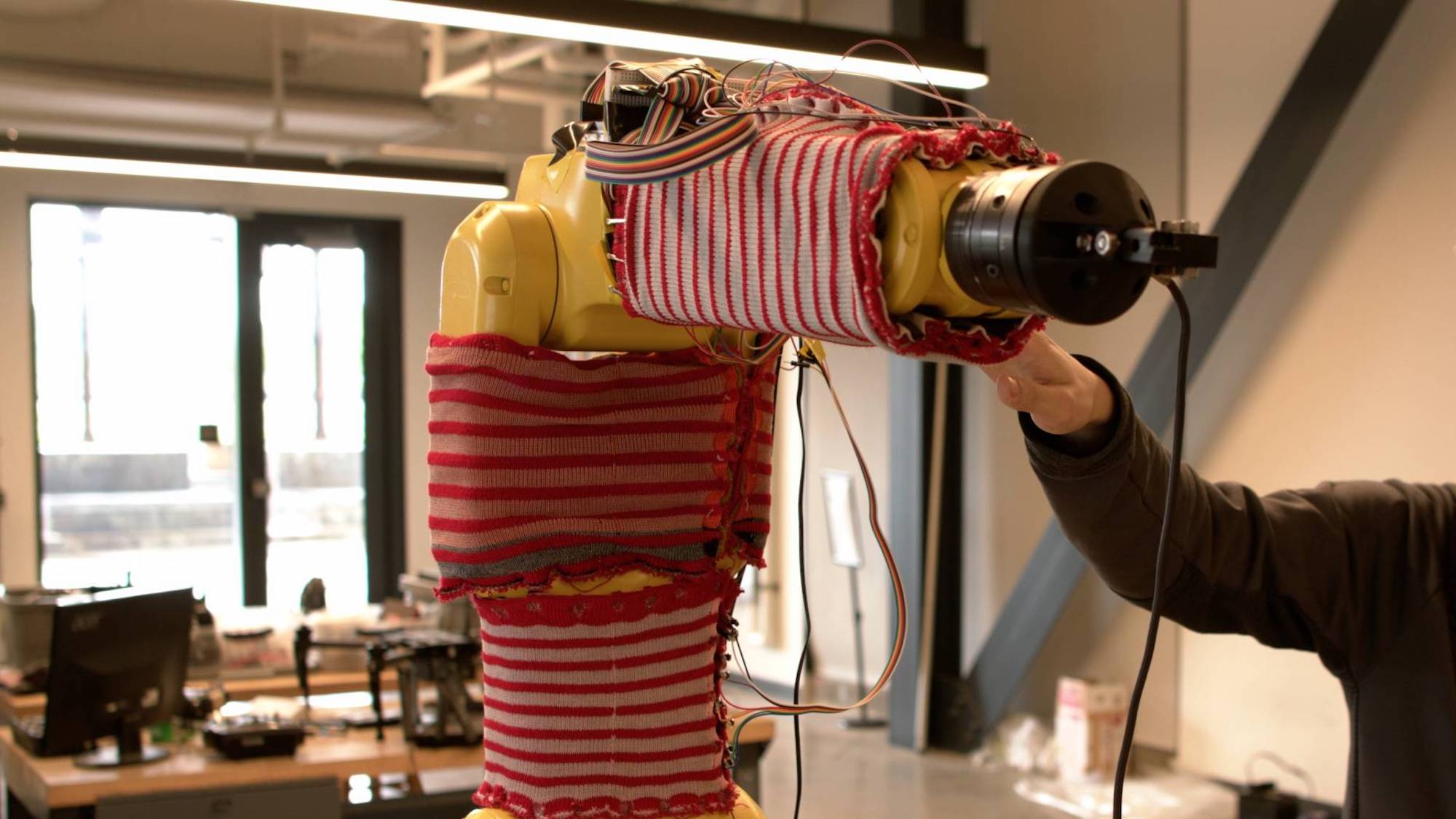Certain robots can certainly sense cold temperatures, but feeling cold is a whole other ordeal. And yet the world is now blessed with robot sweaters.
To be fair, the new, adorable garb recently designed by an engineering team at Carnegie Mellon University’s Robotics Institute isn’t intended to keep machines warm. As detailed in a research paper scheduled to be presented at 2023 IEEE International Conference on Robotics and Automation, the group utilized the properties of a knitted sweater to create a fabric capable of sensing pressure and contact. The cutting-edge textile can now help indicate direction, orientation, and even grip strength via physical touch.
[Related: A new material creates clean electricity from the air around it.]
Like its yarn inspiration, the new “RobotSweater” fabric can be woven into whatever three-dimensional shape is needed, and thus fitted over robots’ uneven shapes and surfaces. The knitted material itself features two layers of conductive, metallic fibers capable of conducting electricity. Between those two layers, another lace-like pattern is inserted. When pressure is applied, a closed circuit is generated and subsequently detected by sensors.
In order to ensure the metallic yarn didn’t degrade or break with usage, the team wrapped the wires around snap fasteners at the end of each stripe in the fabric. “You need a way of attaching these things together that is strong, so it can deal with stretching, but isn’t going to destroy the yarn,” James McCann, an assistant professor in Carnegie Mellon’s School of Computer Science (SCS), explained in a statement.
To demonstrate their creation, researchers dressed up a companion robot in their RobotSweater, then pushed it to direct its head and body movement. On a robotic arm, the fabric could respond to guided human pushes, while grabbing the arm itself opened and closed a gripping mechanism.
[Related: Dirty diapers could be recycled into cheap, sturdy concrete.]
Swaddling robots in smart sweaters isn’t just fashionable—it could prove extremely valuable in industrial settings to improve human worker safety. According to the team, most safety barriers are currently extremely rigid and shield-like; encasing machines in flexible, sensitive fabrics, however could make them much more sensitive, and thus able to “detect any possible collision,” said Changliu Liu, an assistant professor of robotics in the SCS. Moving forward, the team hopes to integrate touchscreen inputs like swiping and pinching motions to direct robots. Even if that takes a while to realize, at least the machines will look stylish and cozy.

